[Version française sur le site de La Recherche]
British explorer Ernest Shackleton is considered one of the greatest leaders of the XXth century, notably for bringing back all his crewmates from the ices of Antarctica after the failure of the Endurance expedition. He managed to preserve hope and the willingness to keep fighting within a crew stranded on ice for months, and that conditions were leading to an almost-certain death. Among the peculiarities of Shackleton’s leadership style: even in the worst situations, he had his crew celebrate traditional holidays.
This can be mistaken for a detail. But studies carried on since then show that in an isolated and confined environment, be it a polar base or a space station, celebrating holidays makes a difference. It breaks monotony, helps keeping a sense of time, and improves the crew’s relationships and mood.
That is why here, at HI-SEAS, some of us insist that holidays are celebrated. Having all six crewmembers on-board can be more difficult than one would expect: our workload do not let us take a single day off, the “guests” are always the same, and we don’t have access to traditional food items. But it is worth the effort.
We celebrate birthdays, national holidays, and important milestones of the mission. Here, I write about end-of-year celebrations.
As Sheyna is from a Jewish family, we started with Hanukkah. Fire hazard do not allow for traditional candles or oil-based lights, so we lighted electric candles. On the first evening we played a gambling game with a dreidel (a four-sided spinning top), gambling chocolates. The game is likely more entertaining with drunk uncles and overexcited little cousins, but we enjoyed celebrating it together while talking about Jewish traditions.
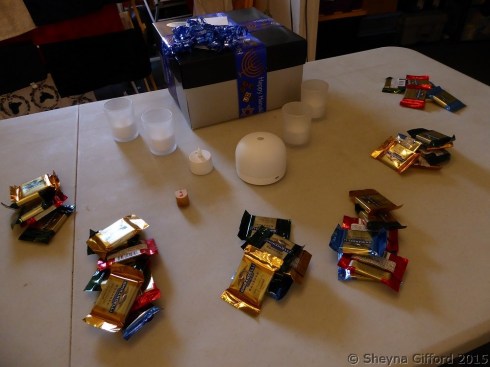
Then, Christmas. In a previous post I described the atmosphere in the days leading to Christmas, which nothing like “on Earth”. A couple of days before the holiday, as my German crewmate seemed to be affected by the lack of Christmas atmosphere, I adapted a recipe for Plätzchen (cookies traditionally prepared by German families before Christmas) learned during a research project in Baden-Württemberg. I say ‘adapted’ because we had to substitute several of the key ingredients. The taste of banana (we replaced eggs, which we didn’t have, with banana powder) was hard to ignore but, based on the observation that many biscuits disappeared during the decoration process, they were appreciated.
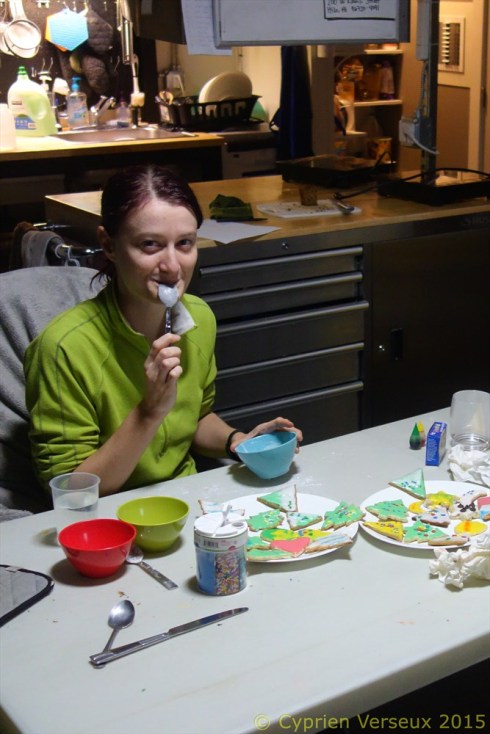
The day before Christmas, we cooked Christmas Eve’s dinner with what we had. We rehydrated cubes of freeze-dried turkey, amalgamated them and shaped them into a roasted turkey. I tried to do a bûche de Noël (“Christmas log”), a French traditional pastry that we eat on Christmas Eve. But as I had to substitute most ingredients, the result was not exactly as expected: the dough was slimy when it came out of the oven, the icing remained liquid, and the brittle was soft. So, I superimposed all the layers in a dish, froze everything and introduced it as a bûche glacée (“iced log”). The crew, who had no idea what this pastry was supposed to look like, seemed to enjoy it. We also made gingerbread houses, which is not that easy when your “house” is a dome.
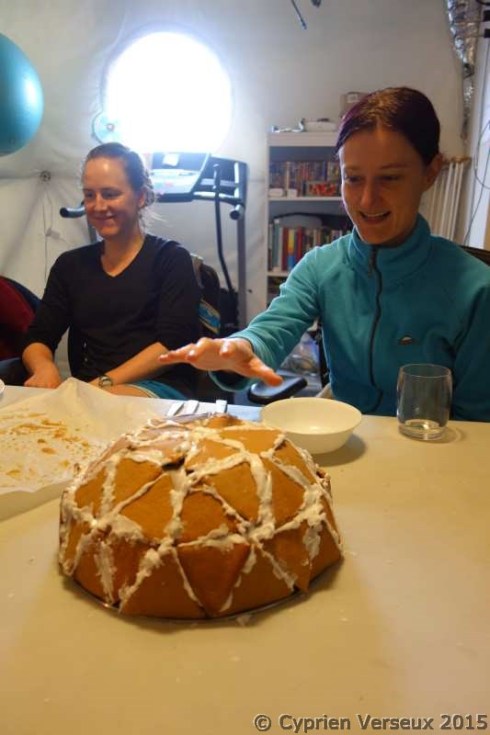
After dinner, we received a surprise from mission support: a video with messages from mission support staff and from some of my crewmates’ family members. No message from my family (which came as no surprise: they were busy dealing with very bad events which happened just before Christmas), but I had the pleasure to watch one of the most famous living astrobiologist talk to us while wearing a Santa’s hat.
Presents were given in the morning of the 25th, following a mix of our different traditions. Most presents were placed at the foot of the tree (or, given the size of the tree: the tree was placed at the foot of most presents), on the recipient’s shoes, following a French tradition. Others were given by hand, and others were hidden. As we had no wrapping paper, wraps were as interesting as their contents: cardboard boxes, napkins, socks, sleeping bag’s cover…
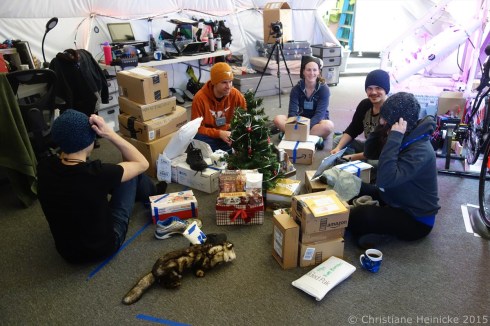
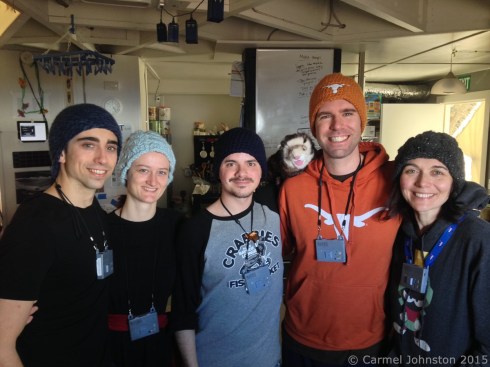
After opening presents, we sent videos to our families. Without phones or direct Internet access, and with emails delayed by 20 minutes in both directions, this is for us the most direct way of communicating with the outside world.
New Year’s Eve was a bit less special. Firstly, because of our workload. Secondly, because of our different sleep cycles: we sleep in shifts to avoid leaving the dome unattended for more than a few hours. Two of my crewmates went to bed at 9 pm and, at midnight, only Christiane and I were still downstairs. We watched the stars and, around midnight, witnessed beautiful fireworks: a surprisingly bright shooting star, highlighted by the lack of artificial light.
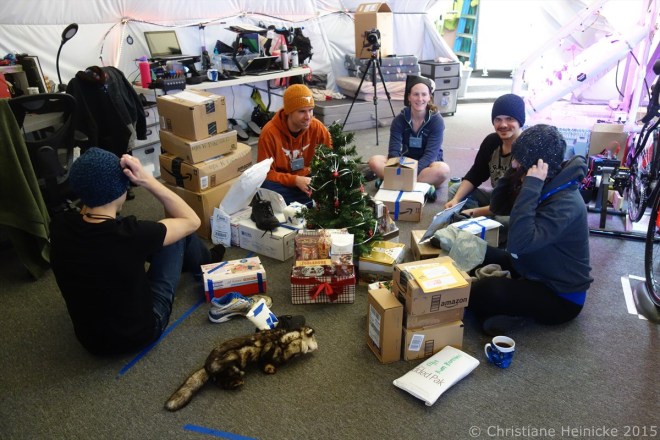

Happy new year to all the crew! Reading all your blogs is both entertaining and educating. You make science fun!
LikeLike
Thank you Anaïs! I forwarded your words to the crew, who much appreciated.
Happy new year to you too!
LikeLike
Well I’m glad if I can contribute to lift the crew’s spirit up, even if it is just for a minute!
LikeLike
Bonne année à vous 6 !
C’est très intéressant d’en apprendre plus sur la mission, et sur ce que vous vivez.
Le ton de tes articles semble changer, peu à peu. C’est peut être car tu en parles un petit peu parfois, mais j’ai l’impression de lire un peu de fatigue dans ce que tu écris.
Plein de bonnes ondes pour vous tous 🙂
LikeLike
Bonjour Henri ! Bonne année à vous aussi !
Merci pour ce message. Effectivement nous sommes parfois un peu fatigués à cause de notre charge de travail et du manque de soleil, mais rien de grave.
A bientôt !
LikeLike